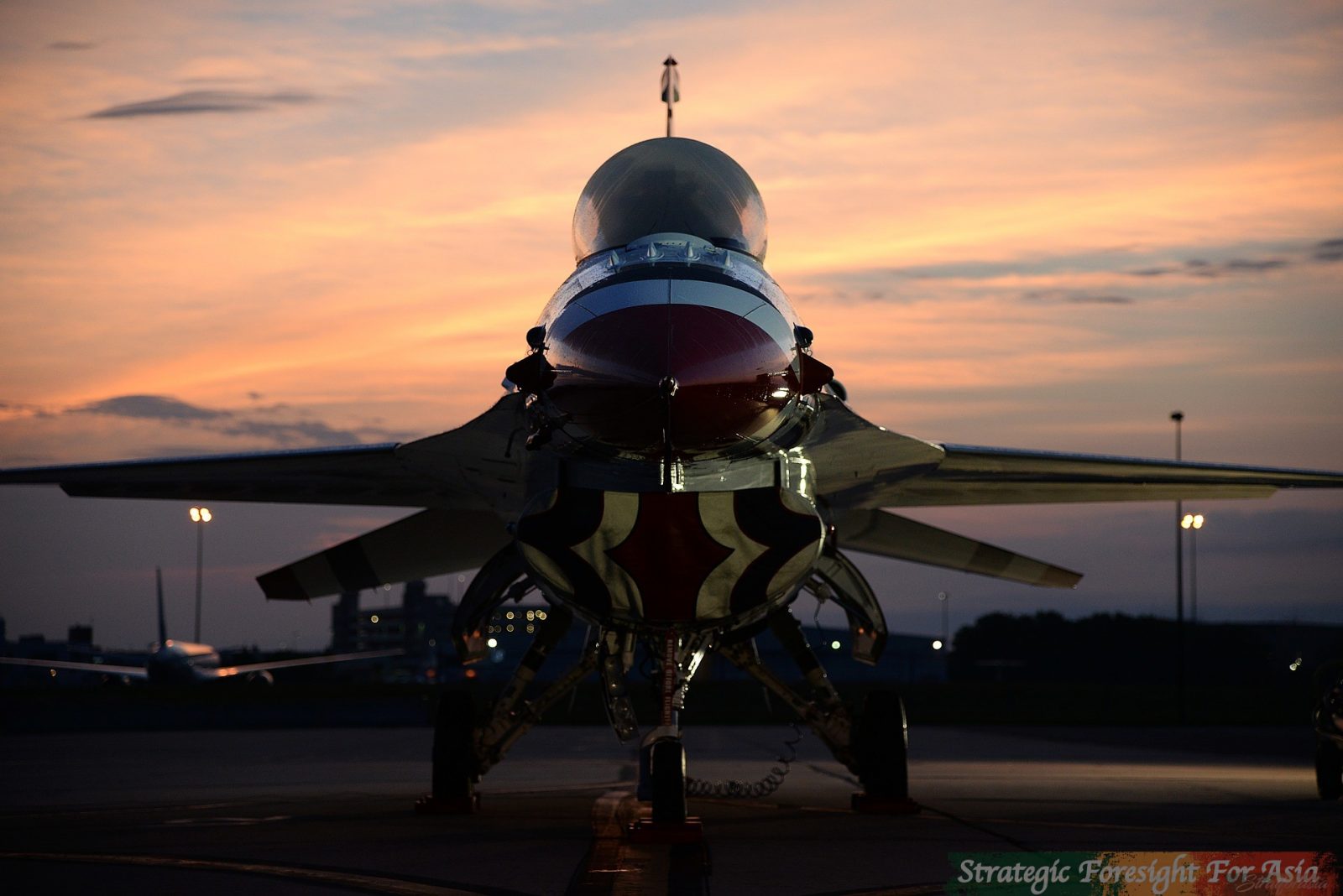 In another significant blow to India, the U.S. has validated Pakistan’s position that none of its F-16s was lost in an aerial encounter that took place on Feb 27, 2019. India has rejected the report by the influential Foreign Policy magazine and insists that one of its Mig-21 Bis did shoot down a Pakistan Air Force (PAF) F-16 fighter aircraft. The recent controversy, whether the F-16 was shot or not – is more of a distraction to cover up India’s efforts of misleading own people and the rest of the international community, since retreating from the previous stance could incur significant political cost, besides bringing into question the credibility of the Indian Air Force (IAF).
In another significant blow to India, the U.S. has validated Pakistan’s position that none of its F-16s was lost in an aerial encounter that took place on Feb 27, 2019. India has rejected the report by the influential Foreign Policy magazine and insists that one of its Mig-21 Bis did shoot down a Pakistan Air Force (PAF) F-16 fighter aircraft. The recent controversy, whether the F-16 was shot or not – is more of a distraction to cover up India’s efforts of misleading own people and the rest of the international community, since retreating from the previous stance could incur significant political cost, besides bringing into question the credibility of the Indian Air Force (IAF).
The Aerial Battle. The aerial encounter that took place on Feb 27, 2019, after Pakistan Air Force (PAF) responded with a counter surgical strike across the Line of Control (LoC), led to a short battle in which a PAF JF-17 shot down one of the Mig-21s and possibly a SU-30 aircraft. The Mig-21 fell inside Pakistan administered Kashmir, and the pilot was captured but returned within 72 hours as a goodwill gesture. The SU-30 aircraft fell in the Indian Occupied Kashmir (IoK), but India has not yet acknowledged the loss of its Russian origin aircraft. Interestingly, during the same time India also ‘mistakenly’ shot down one of its own MI-17 V5 helicopter through friendly fire, while it was approaching to land on an air base. Six airmen were killed in this incident.
The F-16 Controversy. According to the report by the Foreign Policy “the U.S. personnel recently counted Islamabad’s F-16s and found none missing.” The U.S. was invited to Pakistan as part of their bilateral arrangement on the end-user agreement, which is standard practice for all equipment bought under the U.S. foreign military assistance program. The primary purpose of the end user agreement is to ensure that all aircraft are accounted for, and are kept under safe custody, but it does not put constraints on where and how these aircraft would be used during a conflict.
Reacting to the recent U.S. report, some of the Indian commentators have raised the possibility that the ‘allegedly downed’ F-16 aircraft could be out of the lot that Pakistan purchased from Jordan; but as per the U.S. foreign military sales rules, all such third party transfers are also covered under the end user agreement. India has also recently bought military equipment from the U.S. and would be well conversant with the conditionalities attached to the U.S. origin military equipment
Nevertheless, to divert focus from its own military failure, India’s Ministry of External Affairs (MEA) in its earlier Press Release stated that India had asked the U.S. “to examine whether the use of F-16 against India is in accordance with the terms and conditions of sale.” The senior U.S. defense officials while talking to Foreign Policy have said that “[I]t would be incredibly naïve for us to believe that we could sell some type of equipment to Pakistan that they would not intend to use in a fight.”
Commenting on the Foreign Policy report, Pakistan’s Inter-Service Public Relations (ISPR) tweeted “[T]ruth always prevails. Time for India to speak the truth about false claims & actual losses on their side including the second aircraft shot down by Pakistan…” The ISPR also displayed all four R-73 missiles seeker heads that were recovered from the wreckage of Mig-21, and stated: “We have more truth on this to share.” The reference to ‘more truth’ could be towards the video recording of the JF-17 aircraft that shot down the two Indian aircraft, and also of the surgical strike carried out by the PAF against India’s military installations. Pakistan could release the videos at an appropriate time if India continues to create more controversies and remains adamant about accepting its military losses.

The IAF has also avoided explaining the cause of the SU-30 crash that it says was a result of a technical failure, but it is more likely that it was also shot down by another PAF aircraft. Since the wreckage of SU-30 landed inside the IoK, therefore Pakistan has not formally claimed it as a ‘kill.’ It is entirely possible that the two parachutes that India says were seen by their ground forces could be of a SU-30 pilot and the other one of Mig-21.
The IAF’s refusal to accept the recent report from the U.S. is based on a claim by Wing Commander Abhinandan that he saw the F-16 falling on the Pakistani side of LoC. The Foreign Policy report also suggests that there could be a possibility that Abhinandan may have locked on to “the Pakistani F-16, fired, and genuinely believed he scored a hit.” These claims remain questionable for various reasons.
First, if Abhinandan had shot F-16, he would have announced it immediately on the radio as is usually the case during all aerial combats, and the IAF should have already made the recording public as evidence, instead of relying only on an electronic signature from the AWACS which is not conclusive. Secondly, if the Indian pilot had indeed released his R-73 missile and hit the F-16 aircraft then the how Pakistan has been able to showcase all four missile seekers recovered from the debris of the Mig-21 aircraft. Even destruction caused by a ‘proximity fuze’ of R-73 would have destroyed the missile system completely, besides the targeted aircraft. Third, F-16 is equipped with advanced early warning radars besides chaffs and flares. This capability offers a significant edge to outmanoeuvre the incoming missile of an R-73 class. And finally, it is improbable for a pilot to be in a normal state of consciousness during the critical phase of ejection from a destroyed aircraft. The claim by Abhinandan that during this phase he saw the F-16 falling down could possibly be a case of hallucination, which is not abnormal during a high-velocity ejection from a fighter aircraft.
While there is a disproportionate focus on the F-16 controversy, no questions are being asked why IAF sent six vintage Mig-21s and only a pair each of Mirage 2000s and SU-30s to intercept the expected PAF counter surgical strike on the following day. Mirage 2000 and SU-30 seem to have been either deceived by Pakistan’s ‘escorts’ accompanying the main strike package, or the other Indian aircraft simply extricated the aerial battle leaving Wing Commander Abhinandan to intercept the PAF aircraft all by himself. There is also a possibility that Abhinandan in the heat of the moment may have gotten carried away and crossed the LoC and shot down by PAF JF-17 aircraft.
The F-16 controversy helps India to distract the public debate from its overall military failure. Politicization of the recent crisis by distorting facts and presenting false narratives have badly exposed India’s internal vulnerabilities. If India intends emerging as a credible military power, it will have to face these ground realities and overcome its inherent weaknesses. For now, Pakistan seems to have won the military and the battle of narratives by bringing out facts with credible evidence, which has established the credibility of its air power against a numerically superior air force.
Dr. Adil Sultan is a Visiting Research Fellow at the King’s College London




Adil good piece, difficult for our friends on the East to digest.
They will digest if you add some cow urine syrup in it.